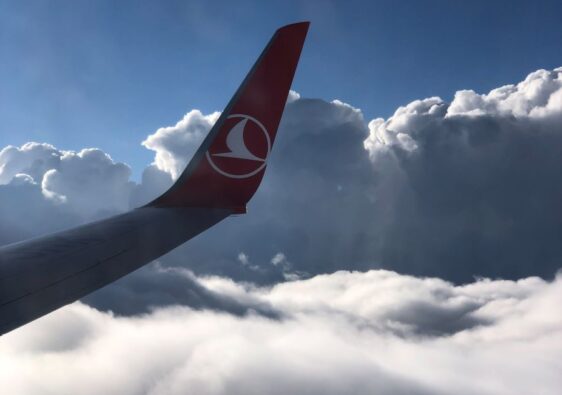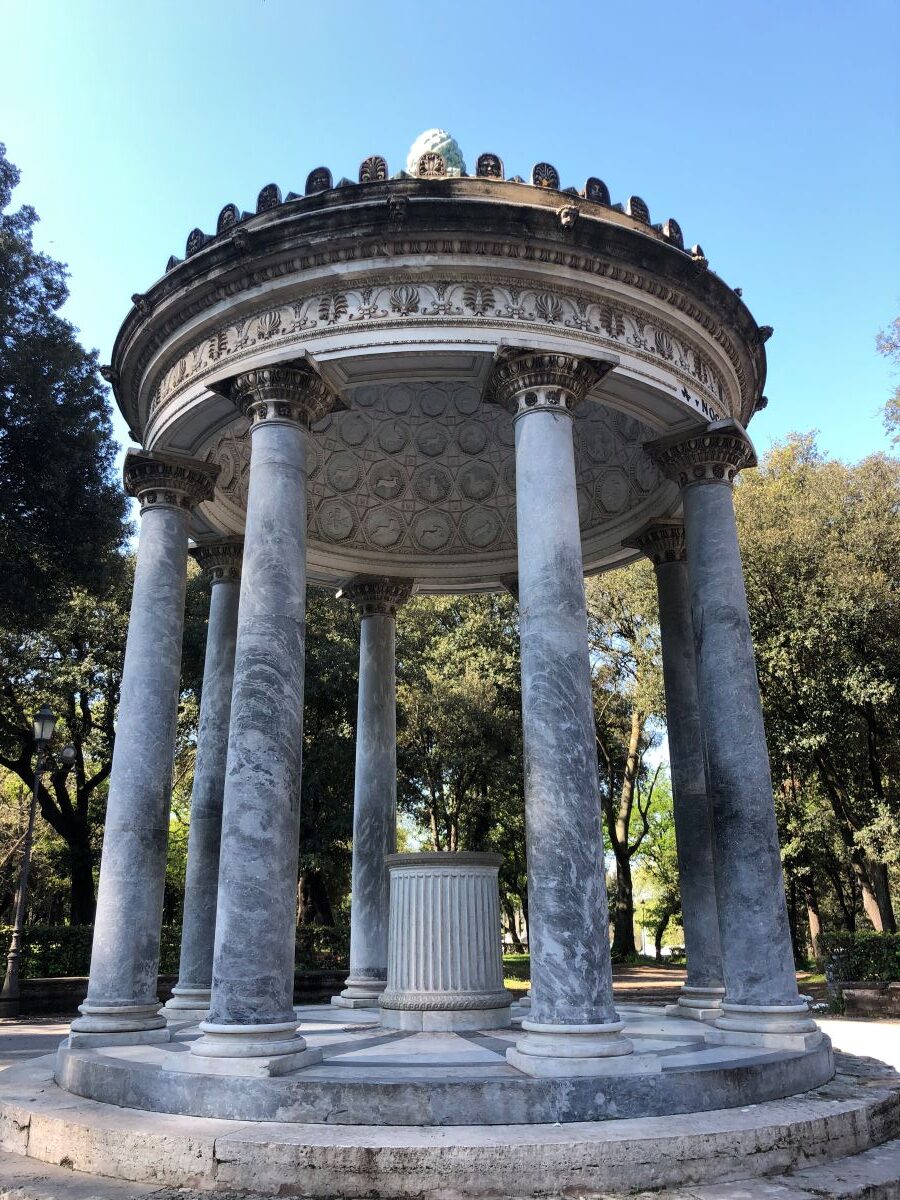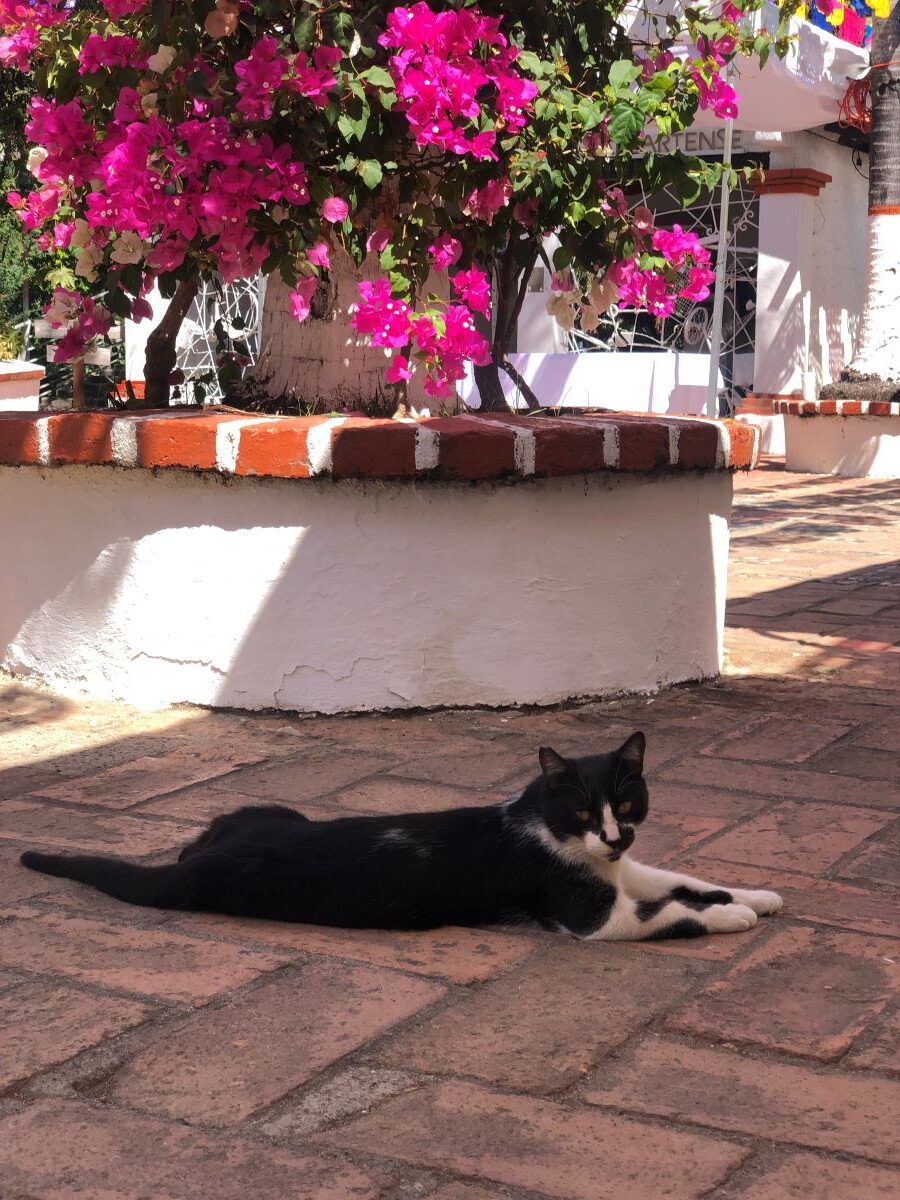One thing I always enjoy about visiting a country that has had a socialist past, is the architecture. I can understand why some don’t enjoy this style, but the clean lines make sense to me. Tirana emerged from its severe dictatorship almost 30 years ago now, but many reminders remain. The brutalist architecture and Skanderbeg Square are some of those.
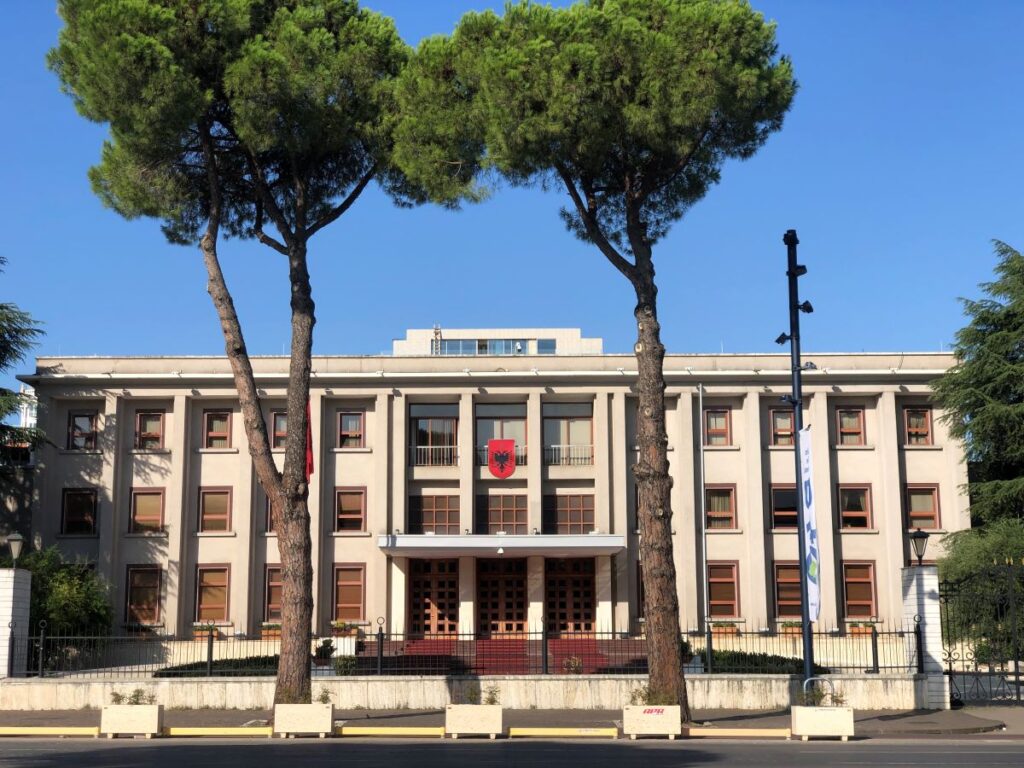
Skanderbeg Square
In the middle of the city, is a vast open space. Its actually an extremely shallow pyramid that is 2 meters high in the centre and has a very subtle outward slope. This is Skanderbeg Square.
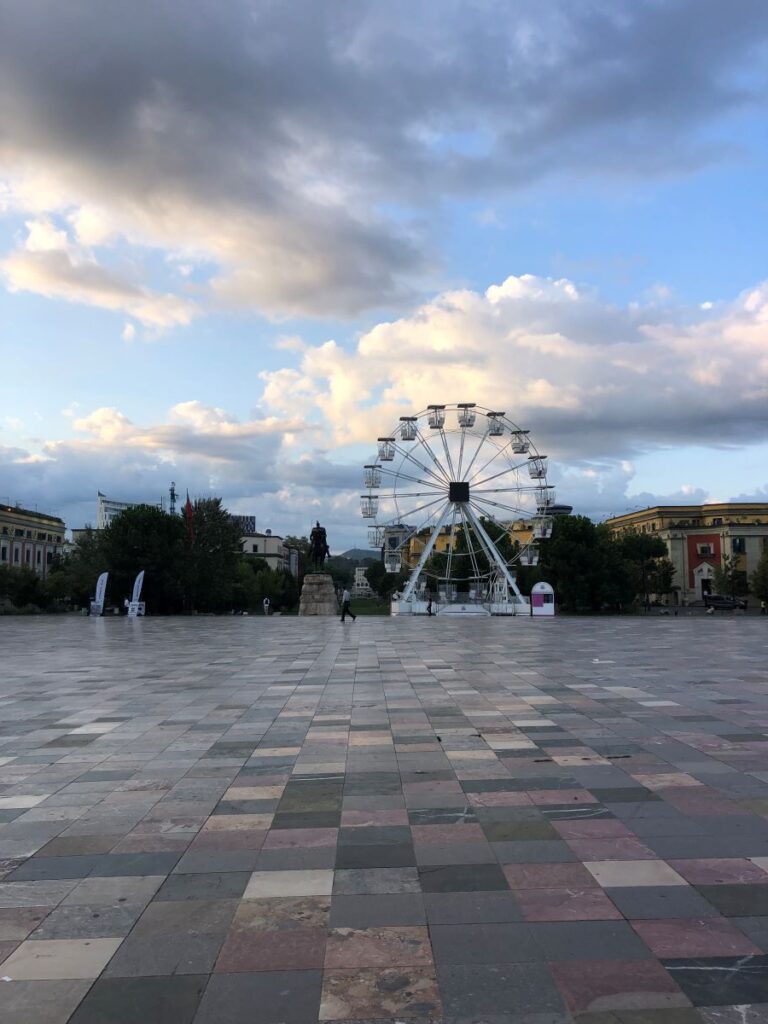
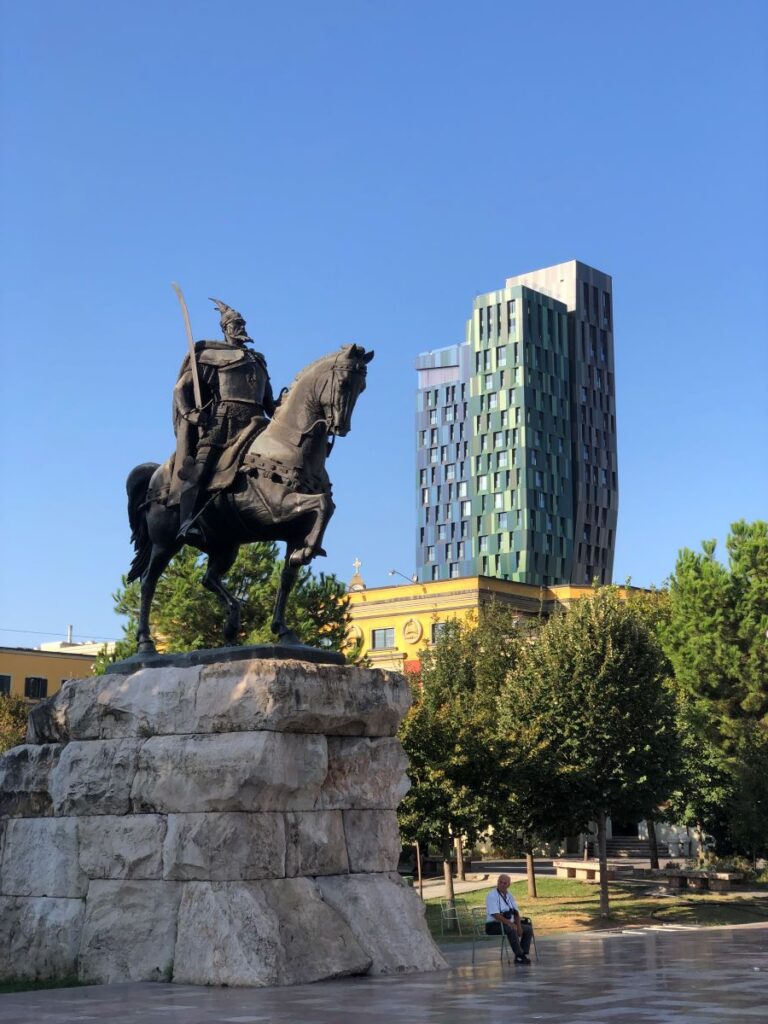
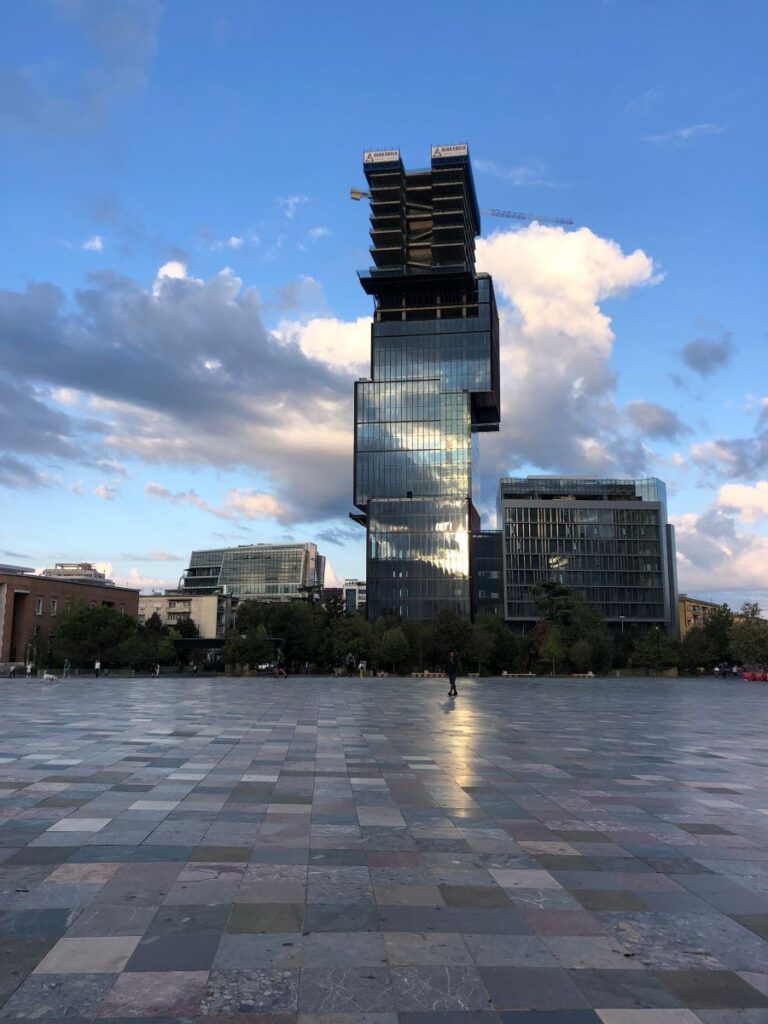
Early in the 20th century, this area was a round-a-bout with a large fountain at the centre. This was changed in 2010 when the space was tiled and transformed into a public, pedestrian only square.
Surrounding the area, are numerous massive buildings, and most of these are from the communist era and represent excellent examples of Brutalist architecture. Included are the National Museum of Albania (currently closed and under refurbishment), the Opera House, the Cultural Centre and the Bank of Albania.
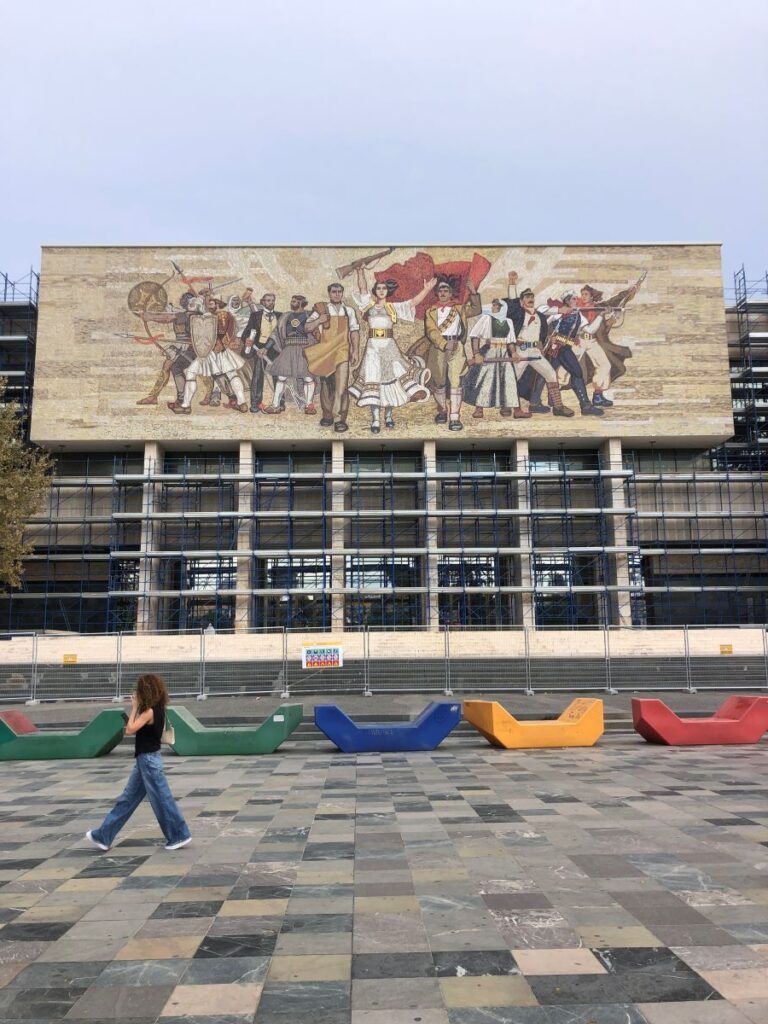
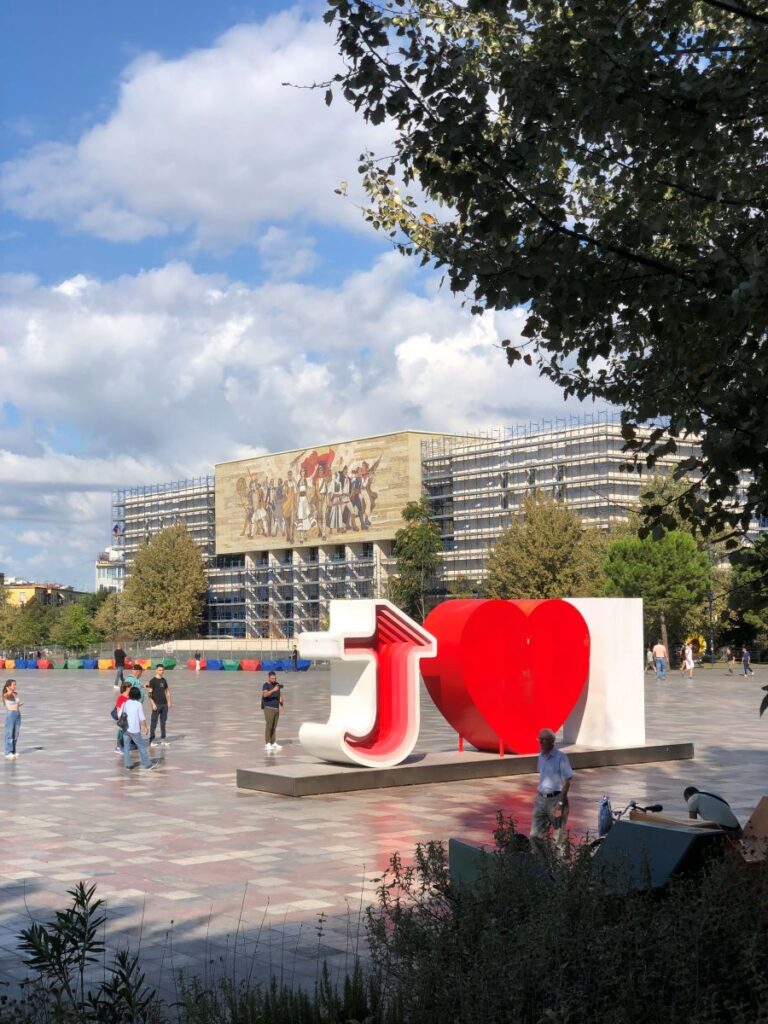
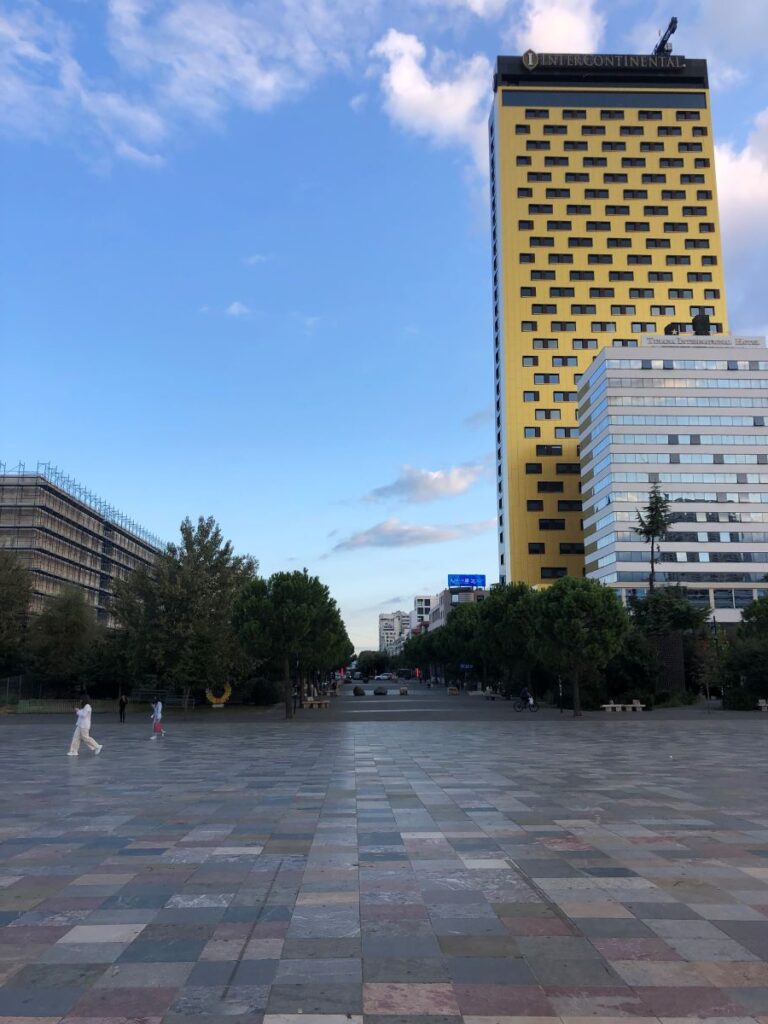
Each one of these is magnificent in its own way. The Opera House is truly grand, covered in white marble with large formidable pillars running the entire length of the front.
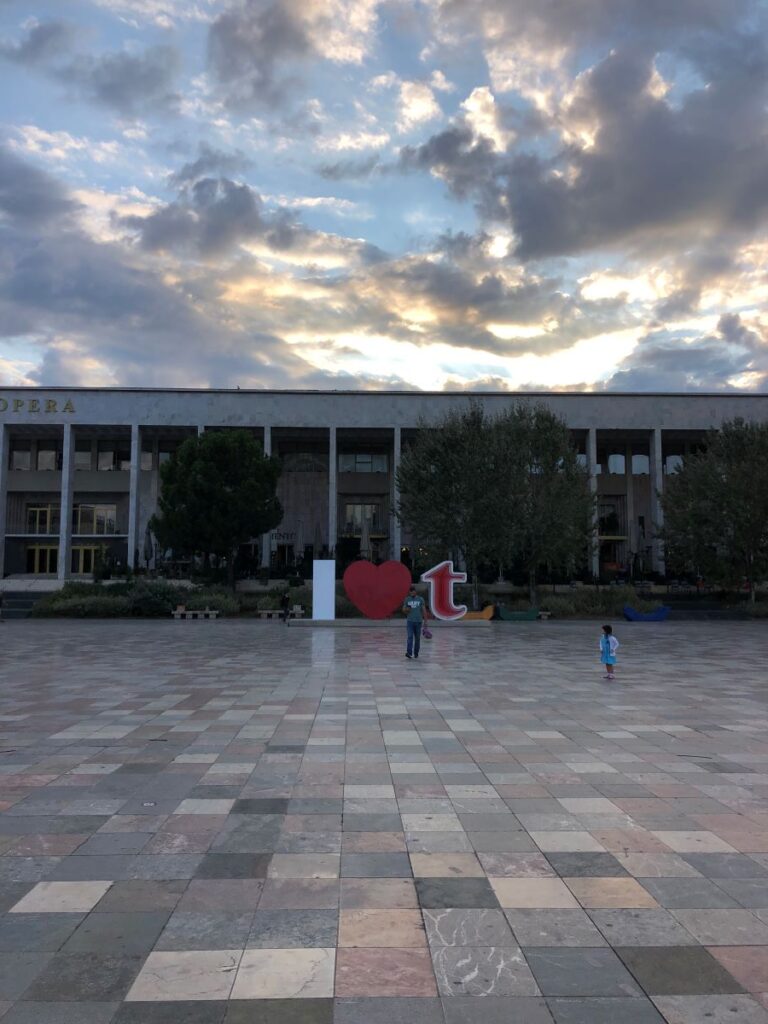
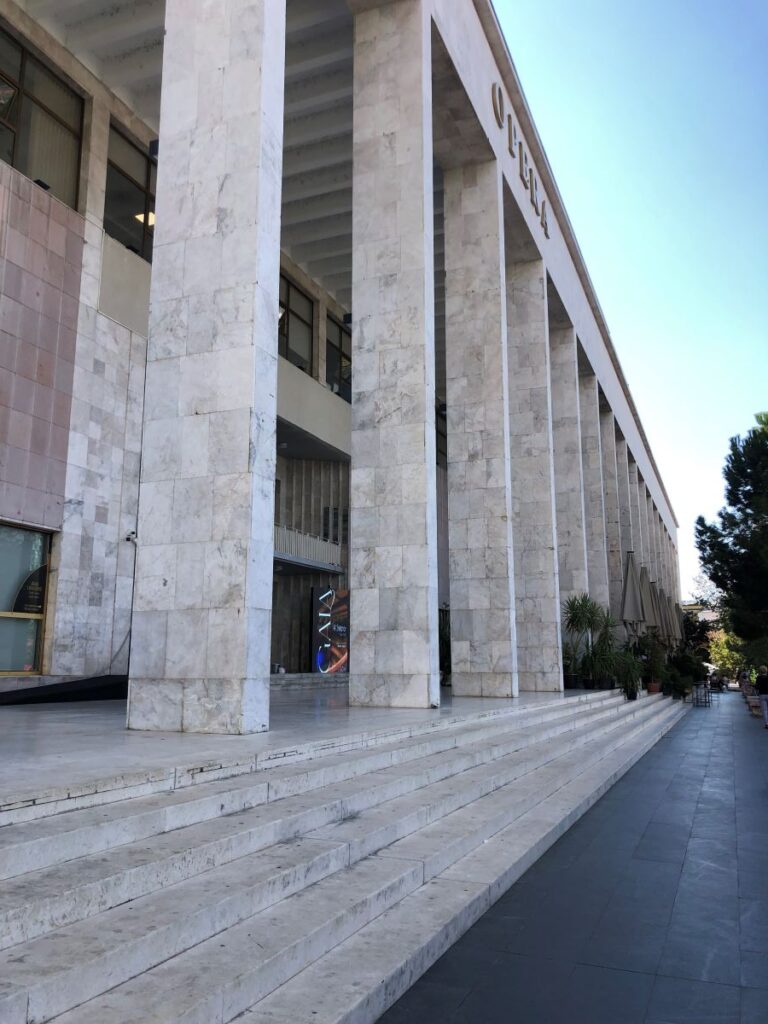
The Bank of Albania, constructed from a deep red brick has that simplistic yet hard and intangible feel about it. At the front where the large curve is are interesting images in the façade.
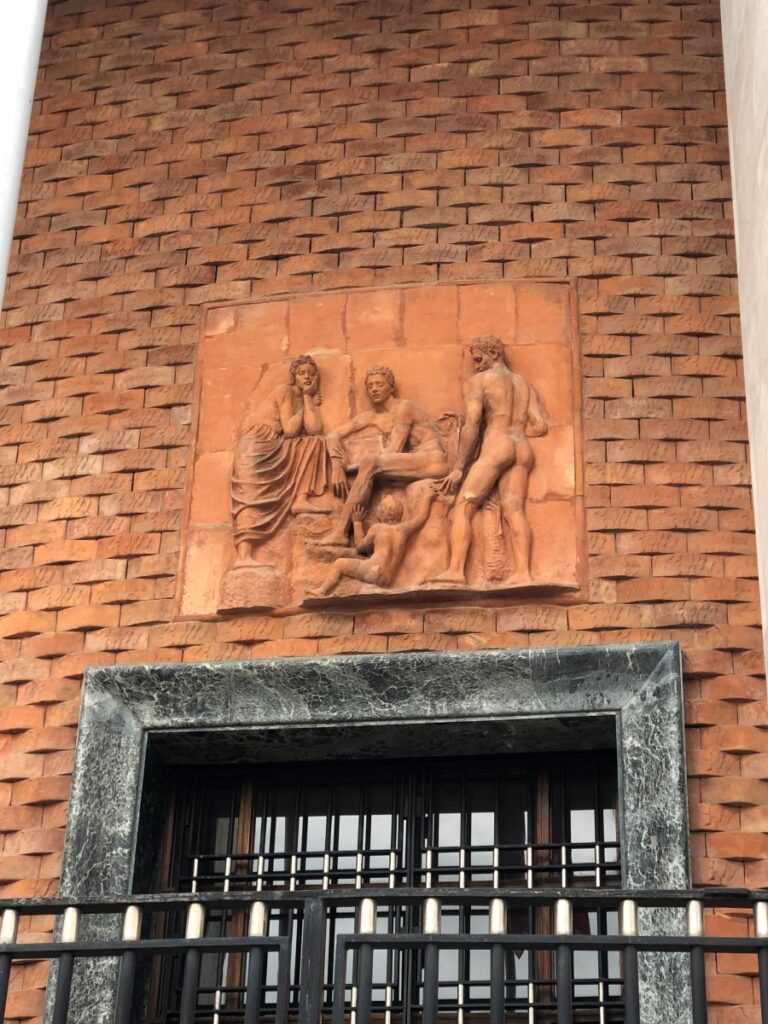
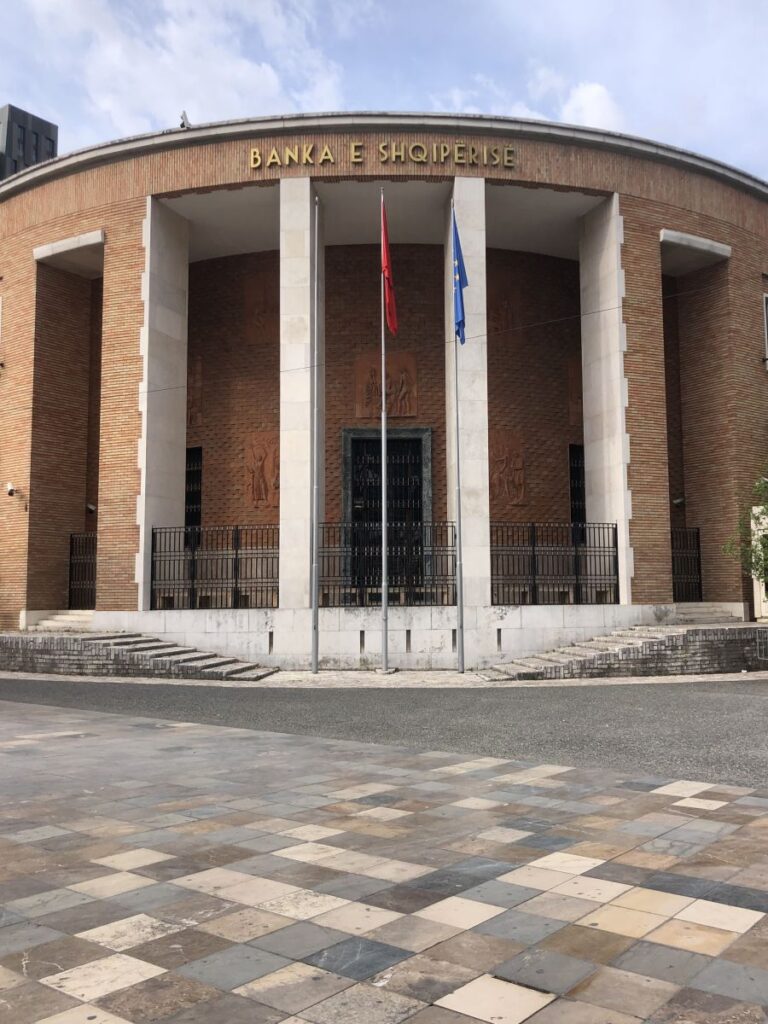
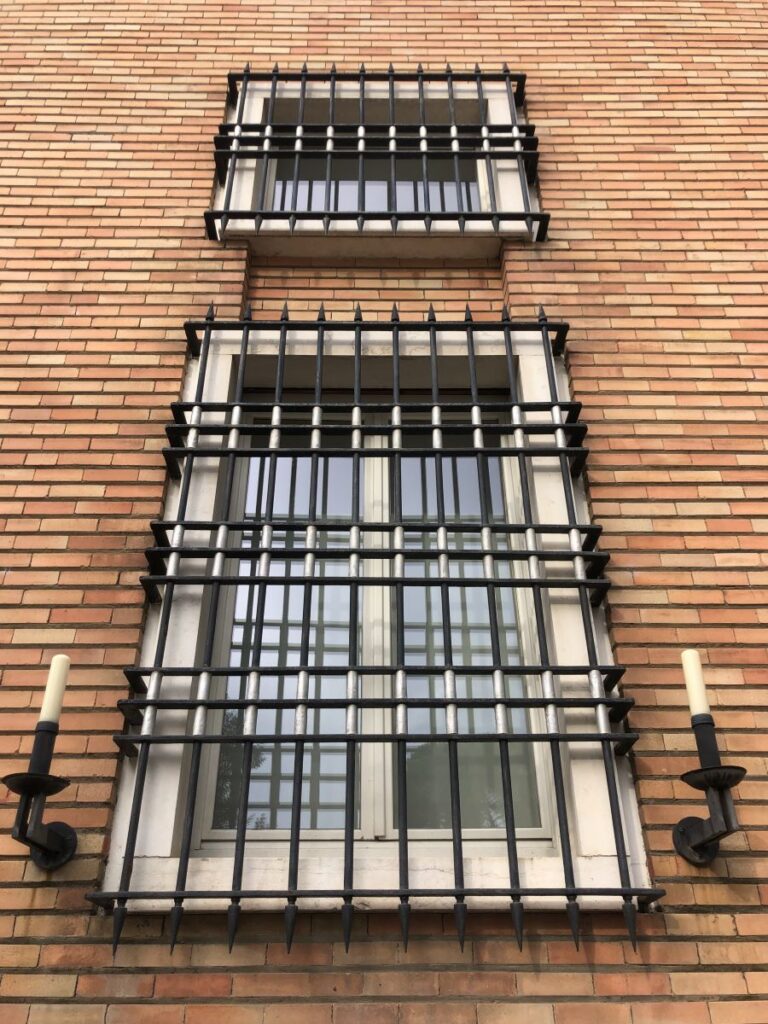
Apartments
I cannot imagine what this city looked like when it emerged in 1991. I have read it being described as ‘drab’ and ‘dreary’. There was very little colour, rarely an organic shape and the facades, raw concrete.
All over, no matter where I walk, I see these five story utilitarian apartment buildings. They vary ever so slightly but basically are replicas of each other. These would have dominated the city 30 years ago.
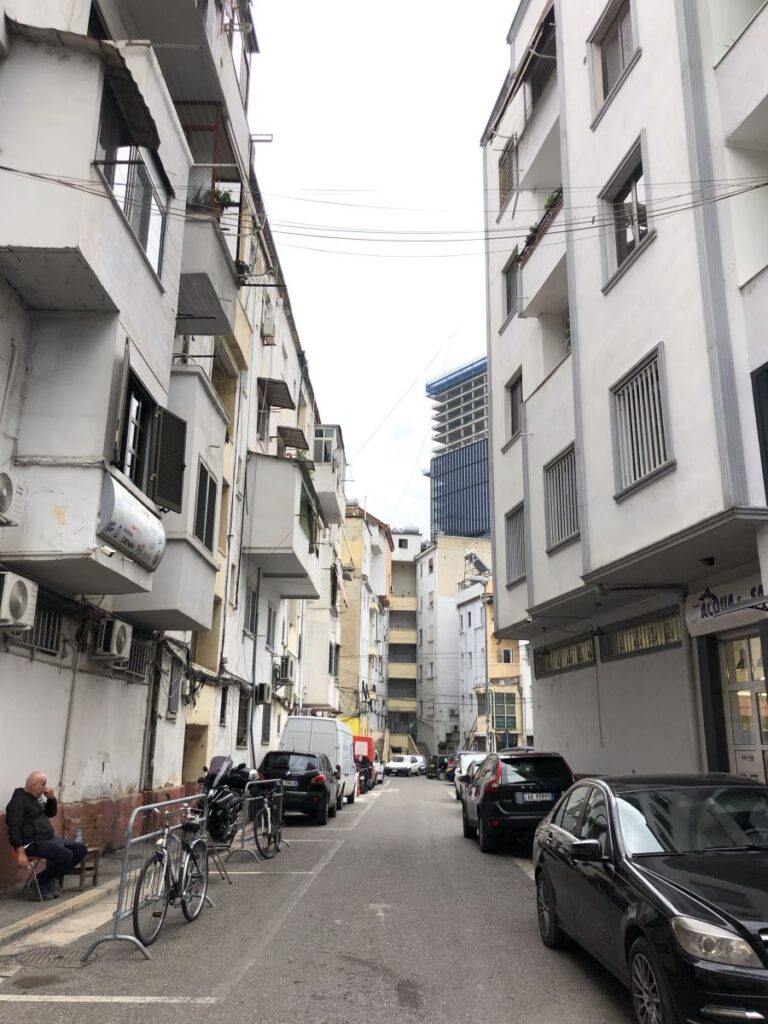
In 2000 the mayor, Edi Rama, an internationally renowned artist, decided he was going to change the look of the city. Create a place where locals wanted to live, add happiness and swathes of colour. He did just that. Hiring foreign and local artists, he had these old apartment buildings painted in bright stripes, polka dots and rainbows.
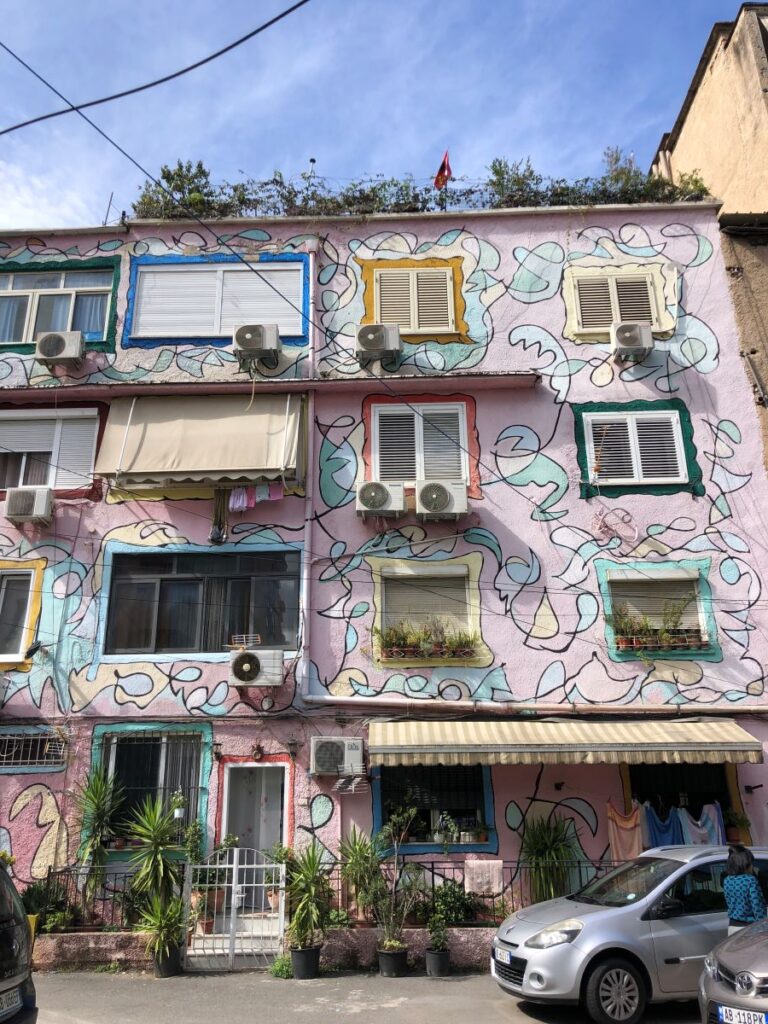
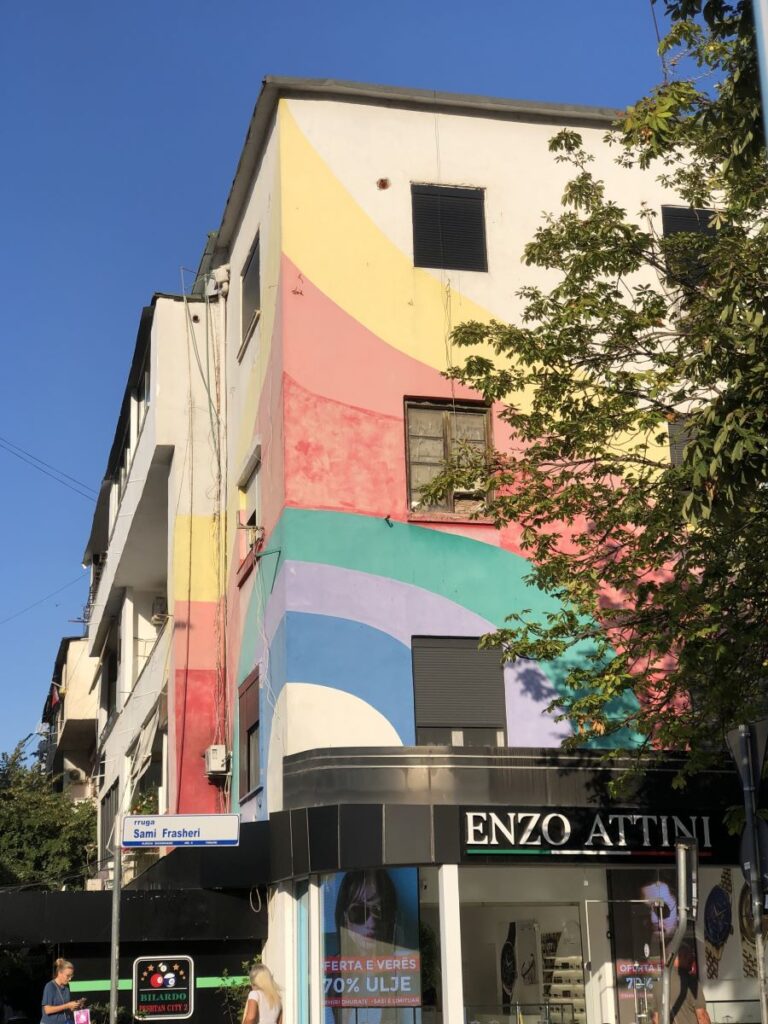
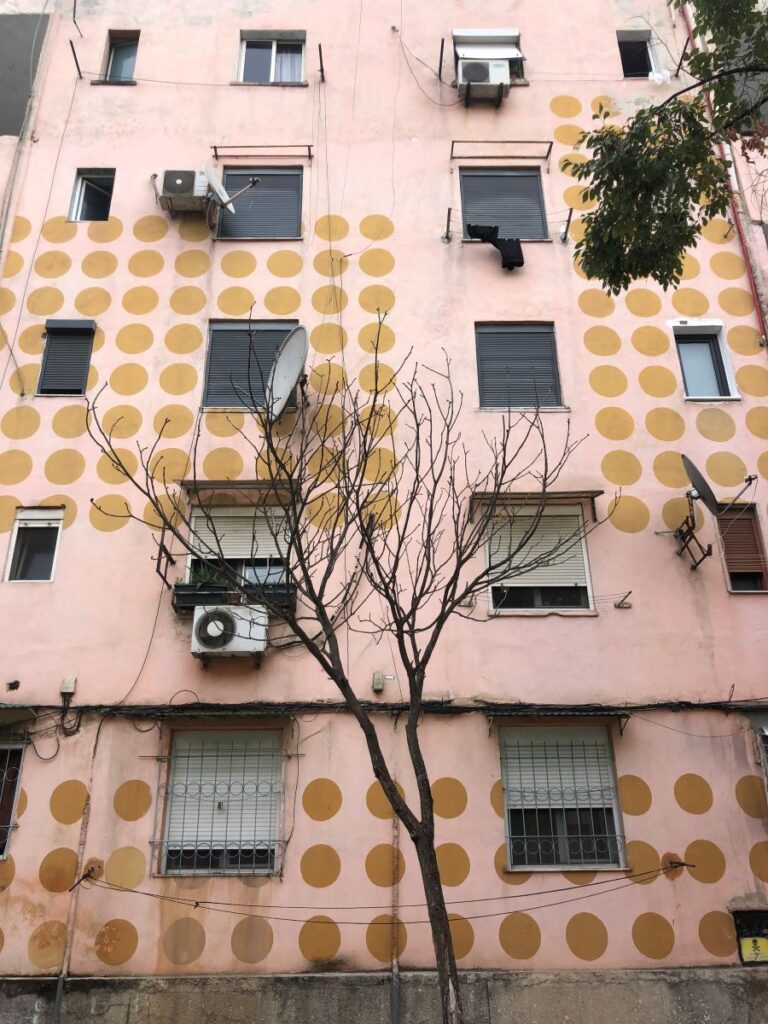
Rama added large childlike trees and other simplistic images in an attempt to bring the city some joy. And he succeeded. In 2004 he was awarded the Best Mayor in the World award and today, these painted buildings can be seen throughout the city.
Brutalist Architecture
Let’s take a look at a few more significant buildings that one will see while exploring the core of Tirana. The National Archaeological Museum is one such structure. Located in another square, Mother Teresa Square, this large and imposing building is striking. The face is lined with a row of massive square pillars with a huge courtyard in between and behind.
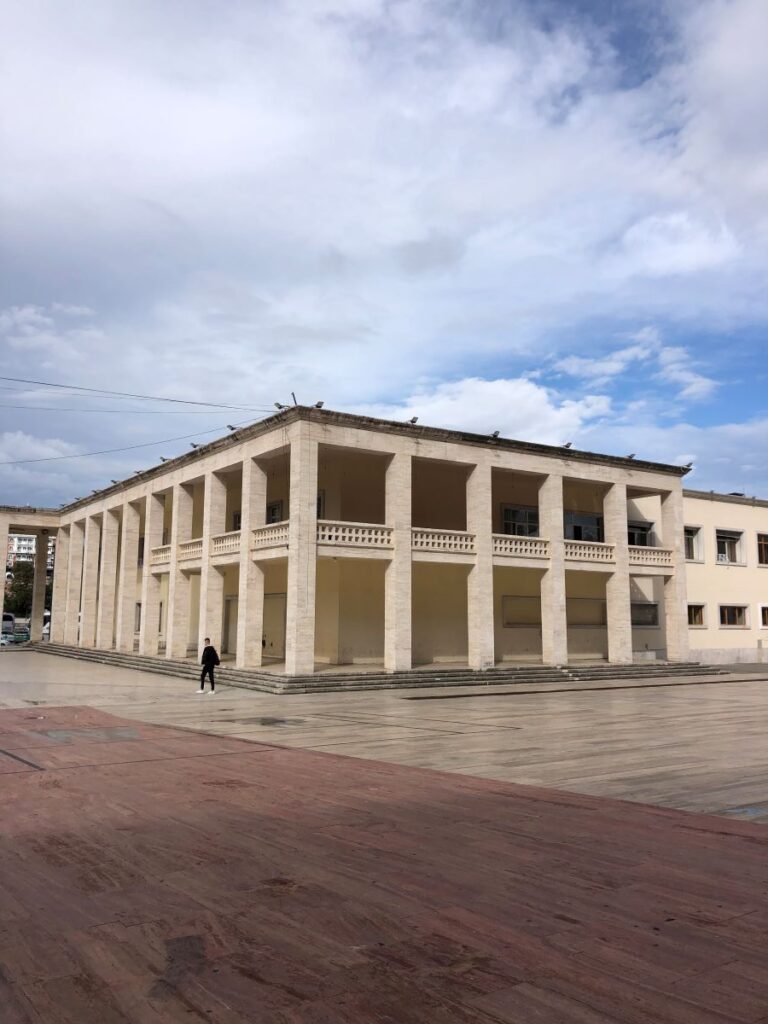
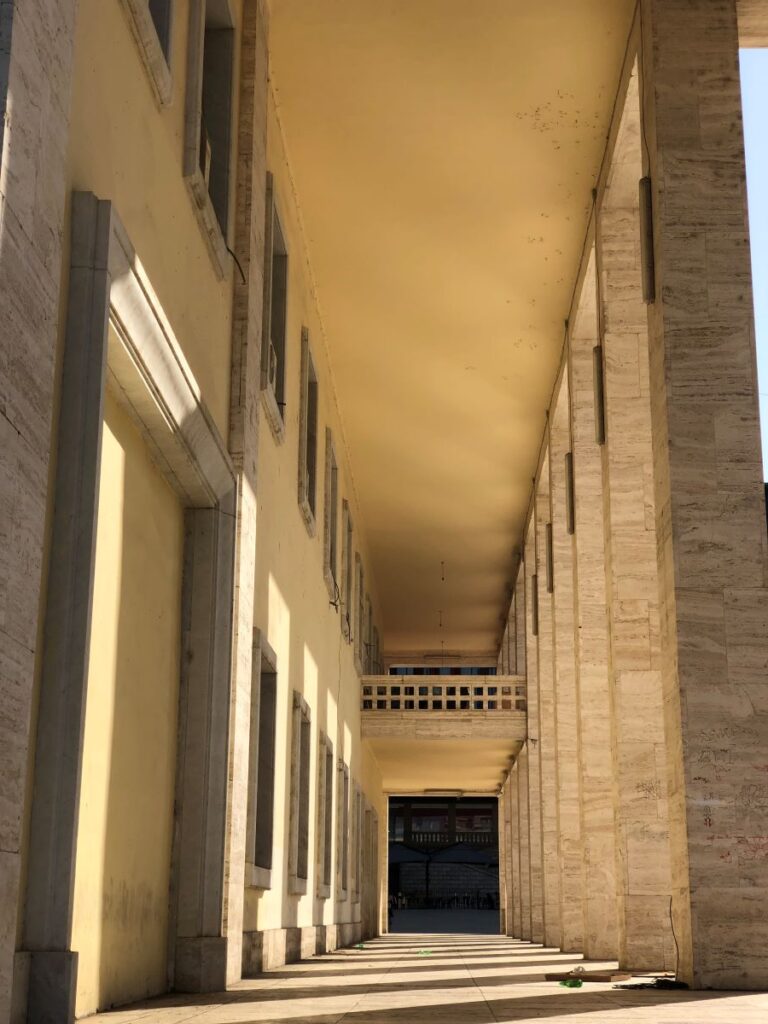
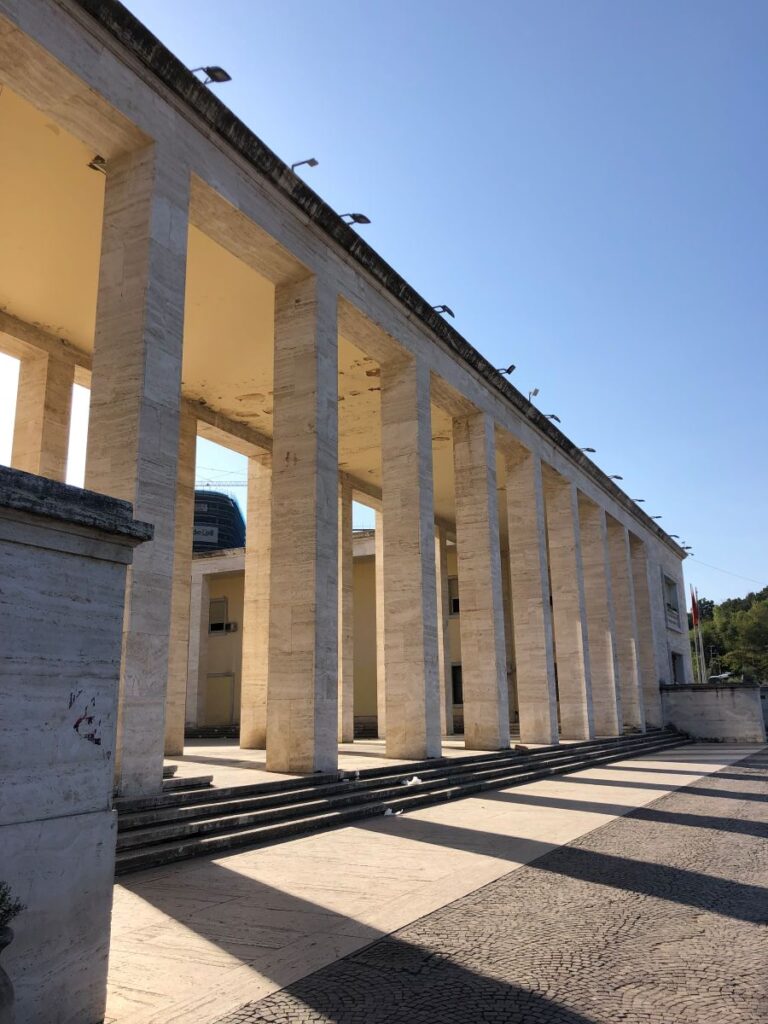
Just beside that, at the head of the square, is the Polytechnic University. If there ever was a cold looking structure it is this one. I can see a small balcony here, about mid way up, I’m guessing this is where Enver Hoxha may have positioned himself before his army and people.
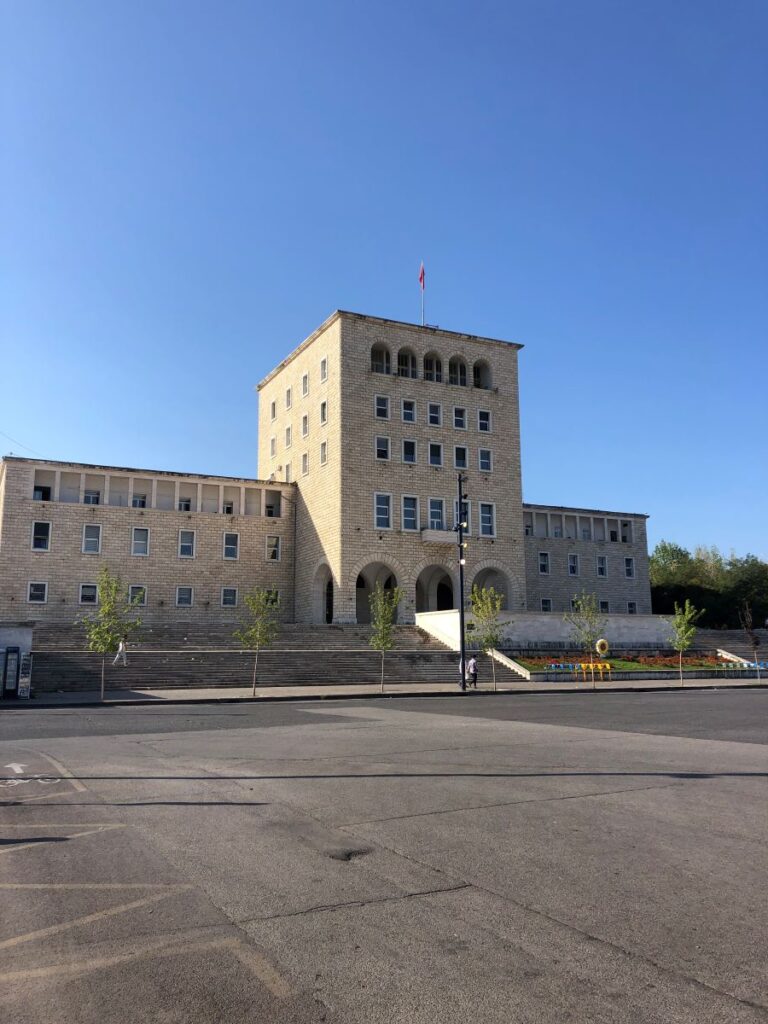
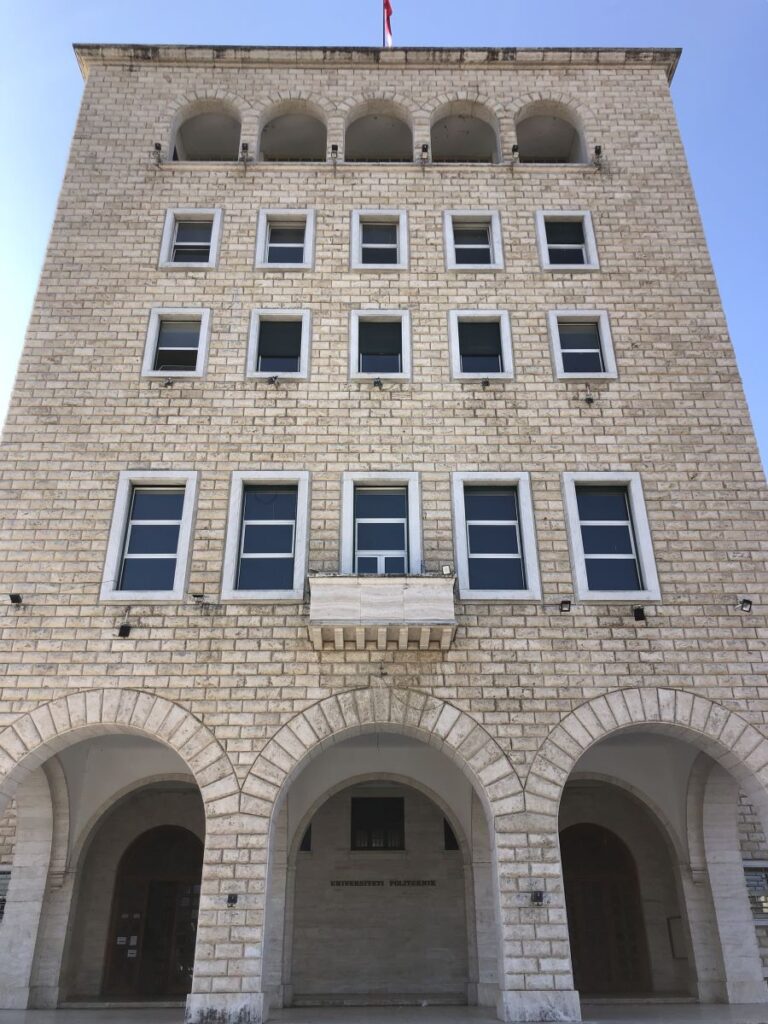
And travelling around the square to the other side we see the School of Arts, perhaps the blandest of them all. The building is completely unremarkable in every way. Splattered throughout the lawn are pieces of metal art, rusting and weather worn.
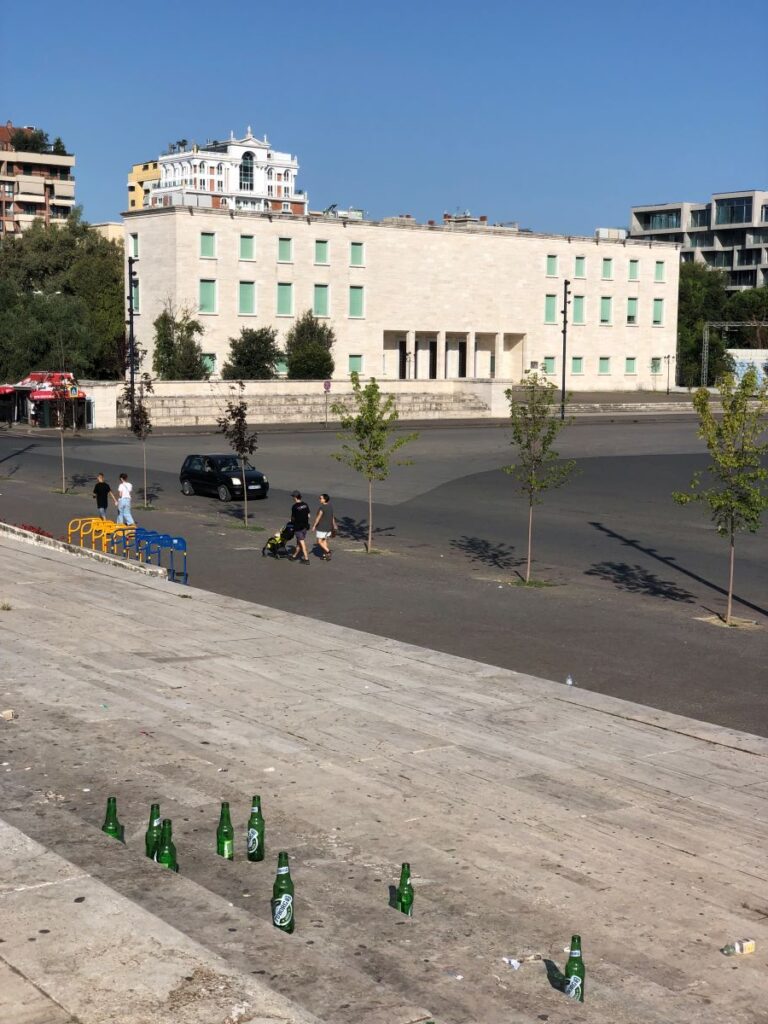
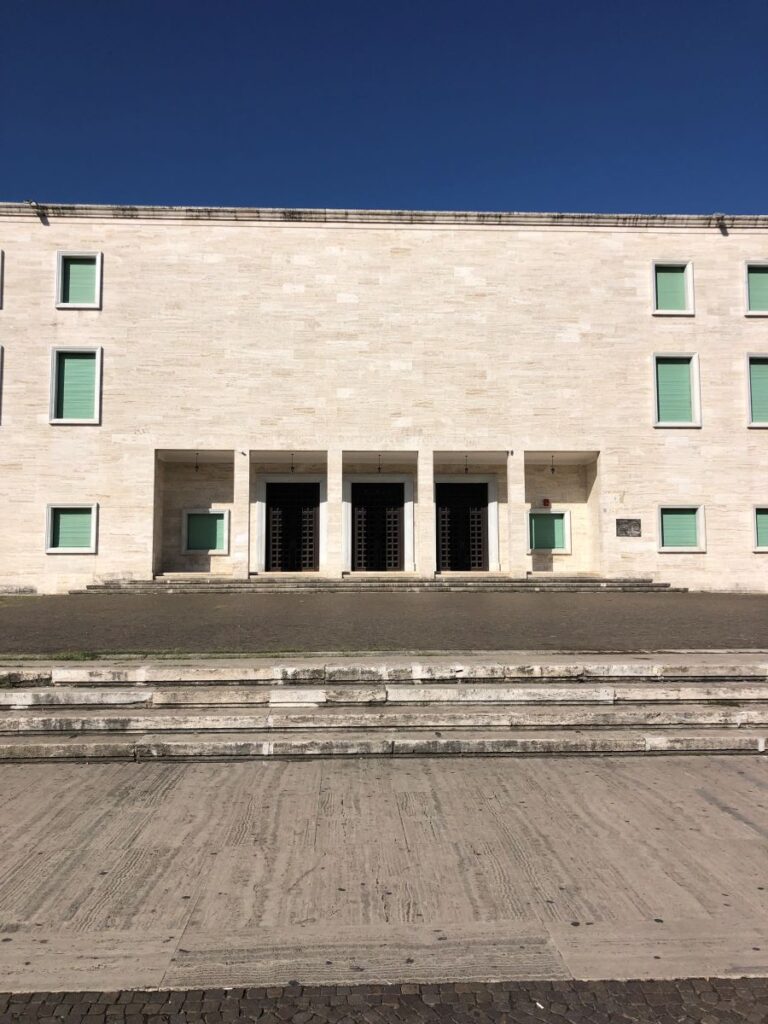

The Prime Ministers Residence
A beautiful example of Brutalist architecture with an engraved panel at the right. This building is heavily guarded, don’t even dare step foot on the stairs. (I know from experience 🫣). I really like the warm earthy tones of this one and the simple, clean lines.


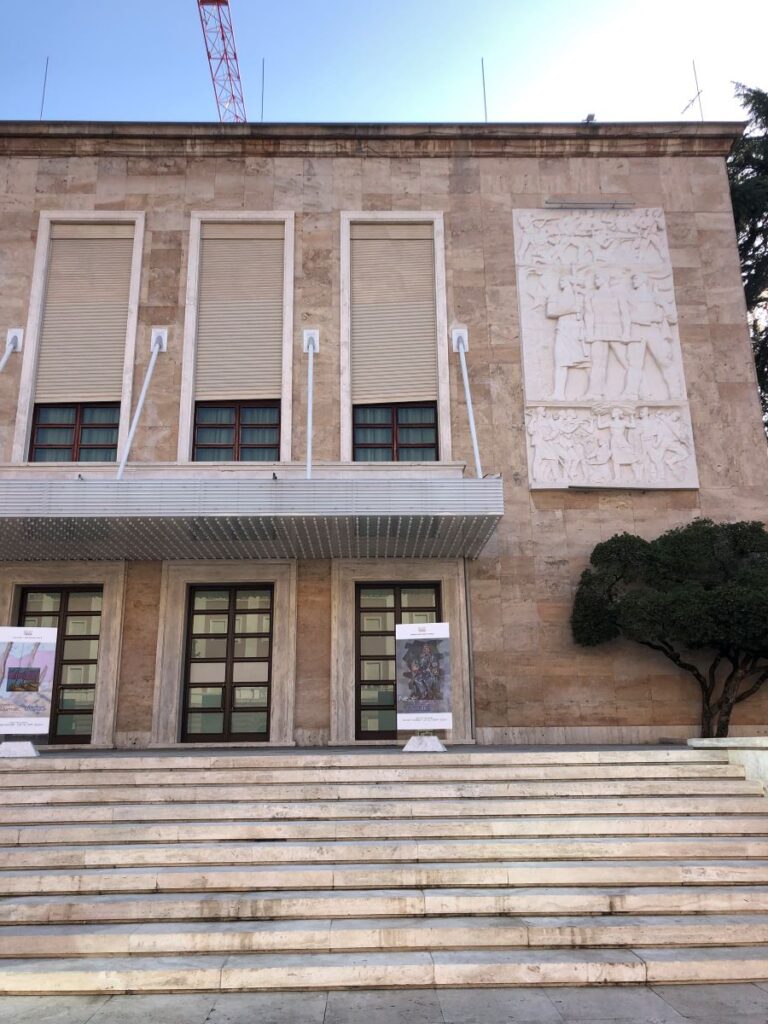
Oddly, there is a colourful mushroom statue in the front garden at the right-hand side. It stands there like a sore thumb, not fitting in with its surroundings what so ever.
I do hope these communist buildings will be preserved, however with the amount of new construction I see all around me, I worry that they will begin to be erased. The Brutalist architecture is fascinating and cold, yet holds a grip over me from the beauty of its simplicity.
